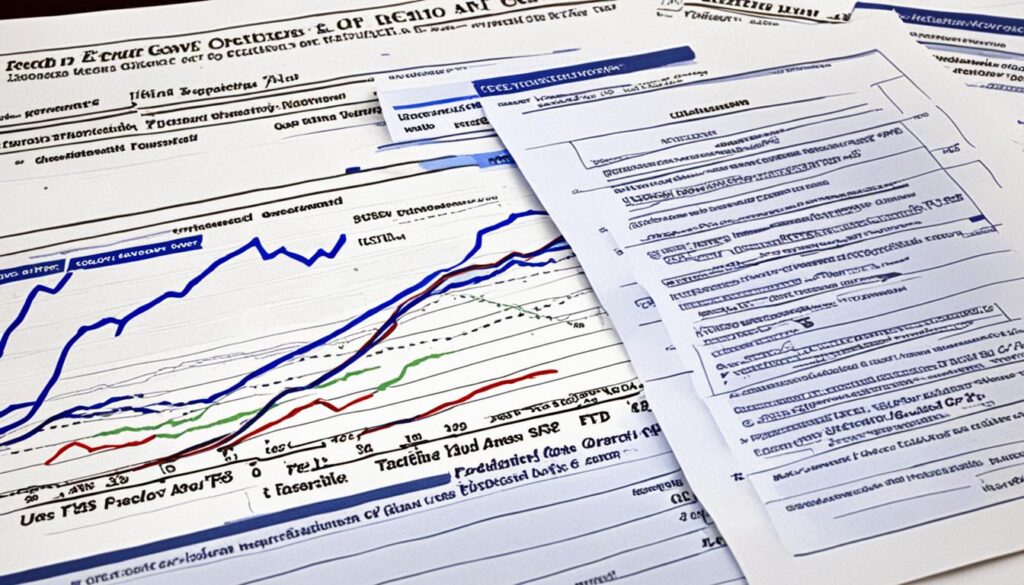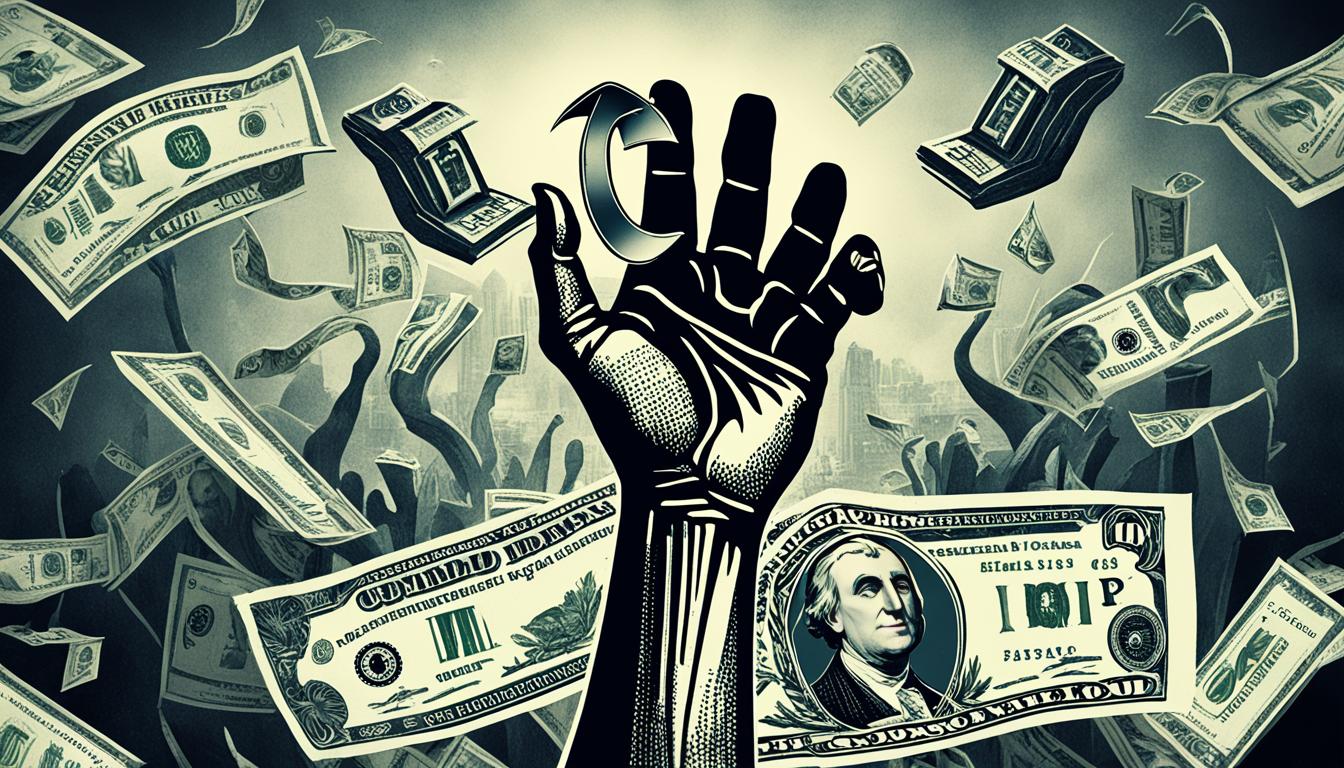“As an Amazon Associate I earn from qualifying purchases.”
In the intricate web of fiscal policy and economic stability, perhaps there’s no figure more pivotal than the Federal Reserve. It’s a little-known fact that the Federal Reserve Board subjects the nation’s largest banks to rigorous annual stress tests that are not mere financial quizzes but stern evaluations with your security in mind. The intention is to safeguard against an economic downturn in a way that even during the severest of recessions, these financial institutions can keep lending, bustling commerce can proceed, and your hard-earned money remains secure.
Amid these proactive measures, the Federal Reserve wields a range of recession response instruments, tailoring its approach to different scenarios. From stress tests to exploratory analyses, the aim is to uphold financial stability and ensure that banks not only endure but emerge robust from hypothetical fiscal tempests. This proactive armor is quintessential, as it protects the economic wellbeing of individuals and businesses alike during times that truly test the resilience of our financial structures.
Key Takeaways of Recession Response Tactics
- The Federal Reserve’s annual stress tests are crucial in pre-empting and counteracting the ripple effects of an economic downturn.
- By estimating potential losses and revenue dips, the stress tests assess large banks’ capacities to withstand economic shocks, thereby contributing to overall financial stability.
- Exploratory analysis by the Federal Reserve is an innovative evaluation diversifying the recession response toolbox without impacting bank capital requirements.
- The measures and tactics revealed serve as a testament to the Federal Reserve’s commitment to sustaining fiscal policy effectiveness.
- With financial stability as the North Star, the Federal Reserve continues to adapt its strategies to maintain confidence and robustness in the financial system against future economic adversities.
Understanding the Federal Reserve’s Role in Economic Stress Testing
As guardians of economic stability, the Federal Reserve takes a proactive approach to ensure the resilience of the banking system. Their meticulous process of stress testing plays a critical role in evaluating banking system evaluation and recession preparedness. This section delves into the annual routine of these stress tests, offering insights into the hypothetical recession scenarios that financial institutions prepare for, and elucidating the thorough analysis undertaken to substantiate the robustness of large banks.
Overview of the Federal Reserve Board’s Annual Stress Test
Each year, stress testing serves as a cornerstone assessment conducted by the Federal Reserve to measure the solvency and fortitude of large banking institutions against economic distress. Through this evaluation, banks must demonstrate they can not only endure but also continue to lend and operate efficiently throughout various doomsday economic scenarios. It’s a stringent process that underscores the Federal Reserve’s role in maintaining a secure financial landscape.
Insight into the Hypothetical Recession Scenarios for 2024
The Federal Reserve’s foresight in drafting recession models is a testament to their commitment to recession preparedness. The speculative scenario for 2024 paints a daunting picture, with forecasts of unemployment rising to a stark 10%, alongside tumultuous market conditions, widening corporate bond spreads, and precipitous drops in asset values. To ensure comprehensive preparedness, these scenarios impose extreme stresses on the banks’ balance sheets. The following table depicts the key elements of the 2024 hypothetical recession scenario.
| Indicator | Predicted Stress Impact in 2024 |
|---|---|
| Unemployment Rate | 10% increase |
| Market Volatility | High |
| Corporate Bond Spread | Widening |
| House Prices | 36% drop |
| Commercial Real Estate Prices | 40% decrease |
The Rigorous Process Behind Evaluating Large Banks’ Resilience
The mechanisms that underpin stress testing are as intricate as the economic tableau they seek to depict. Large banks, particularly those with substantial trading or custodial operations, must navigate an added layer of complexity involving a counterparty default scenario. Furthermore, a crucial element of the evaluation includes a global market shock component, designed to test the banks’ trading positions within extensively strained markets.

In sum, the Federal Reserve employs these stress tests as a barometer for how well the banking system can withstand and function under speculative financial catastrophes. This rigorous approach ensures that should future economic turbulence arise, the banking system—the backbone of economic reliability—remains unfaltering.
Exploring the Fed’s Newly Unveiled Exploratory Analysis
As the Federal Reserve continues its ongoing mission to uphold economic resilience, the recent introduction of exploratory analysis has marked a significant progression in identifying and mitigating systemic risks. This innovative approach delves deeper than traditional methods, allowing for a more intricate understanding of the robustness of the financial framework, especially in the face of global market shocks.

Exploratory analysis is a dynamic tool used by the Federal Reserve, designed to rigorously test the banking sector’s capacity to endure hypothetical stress conditions that could potentially lead to systemic risks. By examining a range of non-traditional risk factors, it brings fresh insights into how well equipped banks are to withstand turbulent times. Let’s delve into the specifics of these hypothetical risk elements.
Introduction to the Four Hypothetical Elements of Risk
The exploratory analysis encompasses four hypothetical elements. These encompass rapid deposit repricing and market distress scenarios. Imagine scenarios where sudden economic changes such as spikes in inflation or surges in interest rates prompt a swift repricing of banks’ deposits. This could come to pass as depositors seek higher yields, potentially leading to tight funding conditions. Moreover, market distress scenarios could reflect the hypothetical downfall of major hedge funds, exemplifying significant systemic implications for economic actors.
Assessment of Banking System Resilience Against Funding Stresses
The first facet of the exploratory analysis zeroes in on the rapid deposit repricing due to funding stress. This element scrutinizes how the banking system might fare in an environment of escalating inflation and rising interest rates. A bank’s ability to maintain its funding base and manage liquidity under these conditions is essential for sustained operation during economic downturns, which is why this aspect of the simulation is so critical.
Impact of Market Shocks on the Largest and Most Complex Banks
Following the assessment of funding stresses, the Federal Reserve considers the effect of severe market shocks on the most complex financial institutions. These simulations include the hypothetical collapse of prominent hedge funds and similar entities, conceivably resulting in cascading effects through global markets. Such scenarios are integral for understanding how intertwined and vulnerable large banks might be to shocks that reverberate throughout the financial system.
In summary, the Federal Reserve’s exploratory analysis is a forward-thinking initiative, striving to ensure the integrity of our financial institutions against an array of potential threats. By simulating extreme conditions, the Fed is actively working to safeguard the bedrock of our economic structure and fortify the systemic resilience integral to staving off global market shocks.
How the Fed May Respond to a Recession by Crafting Monetary Policy
The Federal Reserve plays a pivotal role in steering the country through economic upheavals. By fine-tuning monetary policy, the Fed has at its disposal a toolkit engineered to combat recessions, stabilize inflation, and encourage employment. When recessionary clouds gather, one of the most significant levers the Fed can pull is the adjustment of interest rates—a move designed to stimulate economic activity by making borrowing more accessible and saving less attractive.
Since a revision in its approach in 2020, the Federal Reserve has adopted a more nimble monetary framework. With a keen eye on inflation control and a firm commitment to maintaining maximum employment, the Fed may now tolerate periods of higher-than-average inflation. This strategy acknowledges the balancing act between spurring growth and keeping price increases in check, especially pertinent in an environment where natural interest rates remain low, providing limited room for conventional interest rate cuts.
Let’s delve into the nature of these monetary policy tools and how they’re deployed as recession countermeasures:
- Interest Rate Adjustments: By lowering interest rates, the Fed makes it cheaper for businesses and consumers to borrow money, hoping to ignite spending and investment.
- Inflation Control Tactics: Through open market operations and reserve requirements, the Fed can influence liquidity and credit conditions, affecting inflation rates directly.
- Quantitative Easing: In more severe economic scenarios, the Federal Reserve might purchase longer-term securities to pump liquidity into the banking system and reduce long-term interest rates.
- Forward Guidance: Communicating future monetary policy intentions can shape public expectations and market forecasts, often resulting in immediate economic impact.
Below, see a portrayal of the Federal Reserve’s potential actions and the intended economic effects:
| Monetary Policy Tool | Recession Countermeasure | Intended Economic Effect |
|---|---|---|
| Interest Rate Cut | Stimulate borrowing and spending | Encourage economic growth |
| Quantitative Easing | Increase liquidity | Lower long-term interest rates |
| Inflation Targeting | Permit higher inflation | Enhance price stability and support recovery |
| Forward Guidance | Set market expectations | Strengthen economic confidence |
As the steward of the nation’s monetary policy, the Federal Reserve’s strategic employment of these tools can make the difference between a swift recovery and a prolonged economic downturn. Sustaining a delicate balance between fostering growth and avoiding runaway inflation, the Federal Reserve’s actions during a recession are keenly observed by financial markets and everyday citizens alike.
The Fed’s Evolution of Policy Strategy and its Impact on Inflation and Employment
As you navigate through the nuances of modern economic principles, it becomes imperative to understand how the strategies of the Federal Open Market Committee (FOMC) have advanced over the years, particularly concerning inflation targeting and the pursuit of full employment. These policy adjustments reflect the ongoing monetary policy evolution that aims to stimulate economic growth while maintaining price stability.
Transition from the 2012 Longer-Run Goals to the 2020 Major Revision
The year 2020 marked a significant pivot in the FOMC’s approach to monetary policy. Departing from the framework established in 2012, the Federal Reserve redefined its objectives by placing greater emphasis on achieving an average inflation rate over time. This policy shift was born out of the necessity to counteract the historically low inflation rates that threatened to undermine the Fed’s mandate for balanced economic growth.
Implementing a Flexible Average Inflation Targeting Strategy
Flexible average inflation targeting has emerged as the cornerstone of the Federal Reserve’s revised approach. Unlike static targets, this strategy allows for periods of inflation above the 2% goal to balance phases when inflation has run below that benchmark. Aimed at providing a strong buffer against the zero-lower-bound interest rate constraint, this policy innovation seeks a proactive stance against deflationary spirals.
The Phillips Curve Controversy and Full Employment as a Broad-Based Goal
Historically, the Phillips Curve has suggested an inverse relationship between inflation and unemployment. However, recent evidence points to a more complex interaction, prompting the Fed to adopt a new perspective. Now, the primary focus rests on addressing shortfalls from maximum employment, rather than deviations. This strategy champions a comprehensive employment goal, underscoring the need for a robust and inclusive labor market.
Let’s examine the contrasting strategies through a comparative analysis:
| Strategy Feature | Pre-2020 Policy | Post-2020 Policy |
|---|---|---|
| Inflation Target Approach | Fixed 2% target | Flexible average inflation targeting |
| Employment Objective | Minimize deviations from full employment | Address shortfalls from maximum employment |
| Interaction with Zero-Lower-Bound | Reactive | Proactive |
| Stand on Phillips Curve | Traditional inverse relationship | Adaptive to broader economic factors |
The adaptation of the Federal Reserve to the novel challenges of the 21st century signifies a keen awareness of the dynamic interplay between monetary policy and real-world economic conditions. Your understanding of these changes equips you to better perceive the landscape of inflation targeting and its implications for job creation and sustainable economic growth.
Conclusion
In reflecting on the robust strategies implemented by the Federal Reserve, we recognize the pivotal framework set in place to safeguard the economy against future uncertainties. The Fed’s response, particularly its exhaustive banking sector testing, proves to be a fundamental tool in assessing financial crisis management capabilities. As we survey the economic landscape, meticulous planning and adaptive measures taken by the Federal Reserve cement its role as the bulwark against economic instability.
Moreover, the introduction of exploratory analysis is a testament to the Fed’s vigilance and innovation in evolving its regulatory framework. The adoption of flexible average inflation targeting showcases the institution’s agile approach to adjusting to economic fluctuations. Collectively, these strategies support an optimistic economic outlook, offering assurances that the Fed is equipped to navigate through and mitigate the repercussions of a recessionary period.
As stakeholders and observers of these mechanisms, your understanding of the Federal Reserve’s methodologies is crucial in appreciating the intricacies behind fiscal policy formulation. The conveyance of economic stability and the maintenance of public confidence in the system are foundational goals that drive these regulatory processes. Hence, the collective findings gleaned from the Federal Reserve’s response to both hypothetical and real-world scenarios will shape the future of economic resilience and informed decision-making.
FAQ
What is the Federal Reserve’s role in preparing for an economic downturn?
How does the Federal Reserve conduct economic stress testing?
What were the key factors in the Fed’s 2024 stress test hypothetical scenario?
What is exploratory analysis and how does it supplement the Federal Reserve’s traditional stress tests?
How may the Federal Reserve adjust monetary policy in response to a recession?
What changes were made in the Federal Reserve’s monetary policy framework in 2020?
How does the Fed’s new policy approach reflect the relationship between inflation and employment?
In what ways can the Federal Reserve’s stress tests and policy adaptations instill confidence in the financial system?
Source Links
- https://www.rba.gov.au/education/resources/explainers/recession.html
- https://www.whitehouse.gov/wp-content/uploads/2022/12/TTC-EC-CEA-AI-Report-12052022-1.pdf
- https://www.forbes.com/advisor/investing/what-is-a-recession/
- https://www.whitehouse.gov/cea/written-materials/2022/07/21/how-do-economists-determine-whether-the-economy-is-in-a-recession/
- https://www.businessinsider.com/personal-finance/recession-vs-depression
- https://www.mckinsey.com/featured-insights/mckinsey-explainers/what-is-a-recession
- https://www.investopedia.com/terms/d/demandshock.asp
- https://en.wikipedia.org/wiki/Recession
- https://www.mckinsey.com/capabilities/risk-and-resilience/our-insights/somethings-coming-how-us-companies-can-build-resilience-survive-a-downturn-and-thrive-in-the-next-cycle
“As an Amazon Associate I earn from qualifying purchases.”

